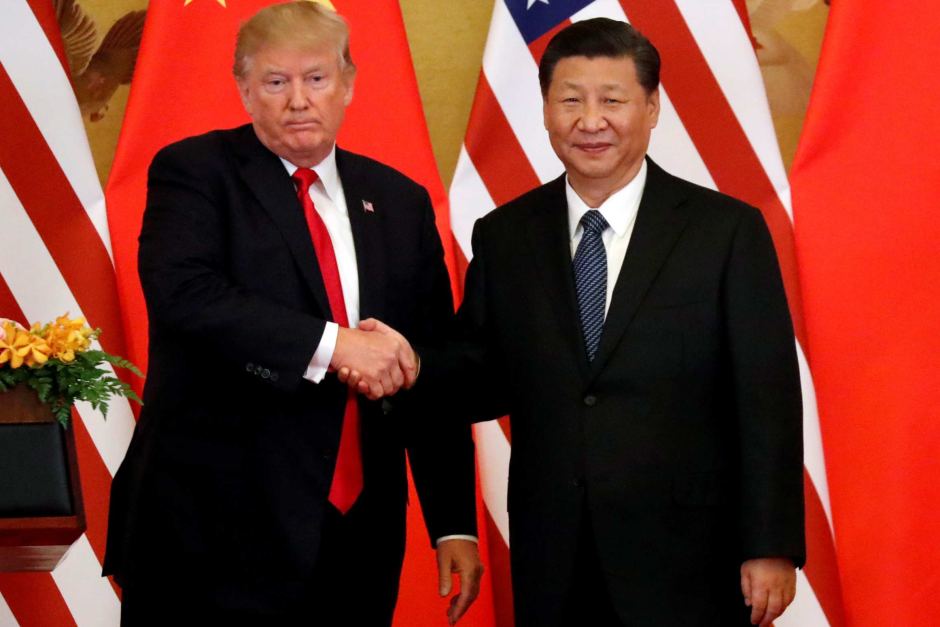Prelude:
Tariff: A tariff is a tax or duty to be paid on a particular class of imports or exports.
- Earlier this month US president Donald Trump imposed import duties of 25% on steel and 10% on aluminum.
- In January he had imposed duties of 30% on solar panels and 20-50% on washing machines.
- He has pulled out of the Trans-Pacific Partnership negotiated by his predecessor Barack Obama and forced re-negotiation of the North America Free Trade Area with Canada and Mexico.
- His main trade target is China, with whom the US had a trade deficit of $375 billion in 2017.
- China has so far tried warning Trump about possible retaliation while trying to talk its way out. Now that Trump seems intent on trade war, China can meekly surrender or retaliate.
- It is now economically strong enough to seriously hurt the US.
- It will very likely retaliate.
__________________________________
Early this month US President Donald Trump had proposed high tariffs on steel and aluminum trade, this step caused havoc to the Chinese producers and the President of China Xi Jinping had already loaded his gun to be prepared for a trade war if things get out of hand. China has a very large market and a robust economy. It is ready for a trade war, can handle a few blows, the US, on the other hand, might not have that liberty.
Robert Ross, a professor of Political Science at Boston College expressed his views to CNBC, by saying stating a few facts about the US-China trade situation:
- “Chinese exports to the United States improve the American standard of living by selling less expensive goods to the United States that we benefit from — and we don’t make those goods anymore.”
- “There are an awful lot of American companies that are making large sums of profits inside China, whether it’s Apple, whether it’s Buick, whether it’s other American companies.”
China is a big importer of US soybeans, maize, and meat. If it shifts these purchases to other countries, US farm producers— a powerful lobby— will suffer. China has been buying thousands of aircraft from Boeing and can shift to Europe’s Airbus. It has reluctantly begun heeding intellectual property rules on pharmaceuticals, films, and music, but can retaliate by selectively targeting US companies in these fields.
China can impose non-tariff barriers on American banks, insurance companies, airlines, and other service industries. Finally, it holds $1.3 trillion of US treasury bonds in its forex reserves and can dump these on the market. That will cause US bond prices to crash and US interest rates to skyrocket.
The USA and China are superpowers and the relationship that India has with both of these powers is pretty high. India imports a lot of goods from the US, whereas the exports are relatively low, given that India doesn’t really have a stronghold of steel and aluminum exports in the US, the tariffs applied won’t be much of an issue for India.
Trump is targeting not just China but all exporters to the US. At his last meeting with Narendra Modi, he blasted India’s 70% import duty on motor-cycles that hurt Harley-Davidson. Modi offered to cut the duty to 50%. Trump sneered this was peanuts. Harley-Davidson already has two factories in India and so has not asked for lower duties. But Trump would like Harley-Davidson to shut its Indian factories and produce only in the US.
He has warned India to slash its trade surplus with the US. In Washington, Indian and US officials have agreed to trim the trade surplus based on comparative advantage. The most competitive US industries are defence, aircraft, and energy (oil and gas). India has agreed to step up its imports of all three. But Trump has warned he will demand much more. India is too weak to stand up and retaliate. It should smile, try to pacify Trump, and limit the damage.


On the other hand, India imports a lot of goods from China too. China is India’s largest trading partner, with bilateral trade at $71.5 billion, but it is heavily skewed in favor of China. India imports $61.3 billion worth of Chinese products while it exports just $10.2 billion worth of goods to China.
China also knows that fighting the US single-handed is difficult. It may well ask other countries to join hands in opposing US trade barriers and threatening joint retaliation. The European Union may be interested. So too may some Asians. None of them dares take on the US unilaterally but could be open to forming a really wide coalition.

What should India do in such circumstances? It certainly must not take the lead in forging an anti-US front with China. Its strategic relationship with the US needs to be nurtured, even if that is painful. If, however, an anti-US trade coalition gathers force, especially in multilateral forums like the WTO, India could unobtrusively join that crowd, making sure it does not stand out. The best hope must be that Trump’s tactics will backfire, hit the US economy, and help boot him out in the 2020 election.
Citations:
1. Indo-China Trade numbers:
https://www.forbes.com/sites/timworstall/2017/07/16/how-india-beats-china-at-trade/#4de920aa48c8
2. Indo-US Trade numbers:
http://www.exportgenius.in/blog/trade-between-india-and-us-india-us-trade-statistics-2016-112.php
3. Professor Robert Ross’s views on the subject:
https://www.cnbc.com/2018/03/15/us-tariffs-on-china-costs-to-americans.html
4. Numbers for India’s import duty for Harley Davidson:



Leave a Reply